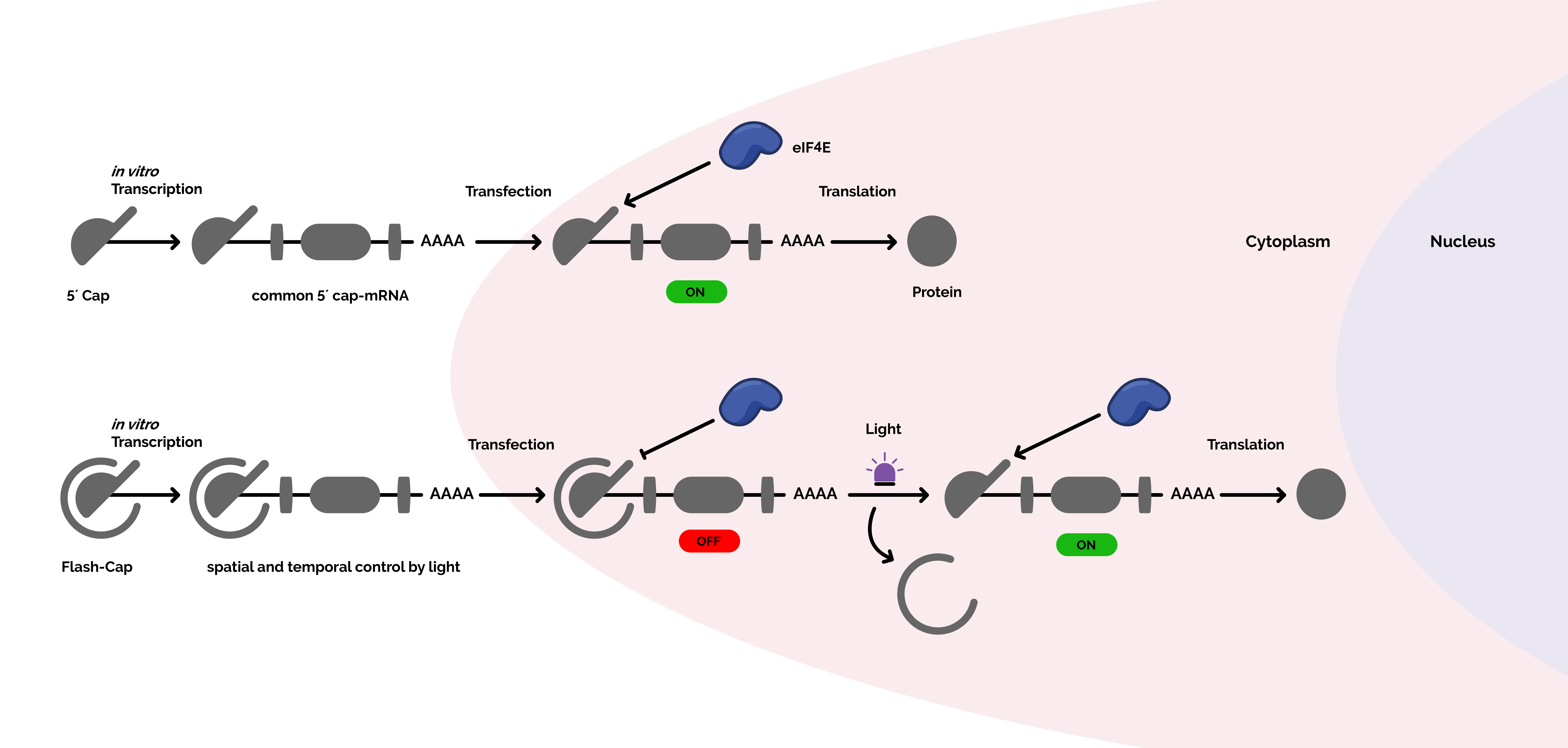Flash-Caps: Shaping the future
Messenger RNAs (mRNAs) have recently entered the stage as therapeutic modality. Prime examples are the mRNA-based vaccines against infection by SARS-Cov2. Hundreds of research groups in academia and industry aim to better understand the multiplicity of the mRNA technology and its possible applications.
However, at present researchers are unable to control when and where the mRNA is translated into proteins – which then have a pharmacological effect. This is a bottleneck that severely limits the research needed to further develop mRNA as a therapeutic modality.

How it works:
Flash-Caps are the first applicable solution that allows mRNA studies to be driven by light without altering the structure or sequence of the natural mRNA. Light is an excellent external trigger that can be applied with high precision in space and time and without interfering with cellular processes. Flash-Caps prevent the translation of the mRNA until activated by light. Flash-Caps are compatible with all standard mRNA production and application procedures and thus of interest to all research groups and companies working on mRNA to date.
Publications
Photocaged 5′ cap analogues for optical control of mRNA translation in cells
The translation of messenger RNA (mRNA) is a fundamental process in gene expression, and control of translation is important to regulate protein synthesis in cells. The primary hallmark of eukaryotic mRNAs is their 5′ cap, whose molecular contacts to the eukaryotic translation initiation factor eIF4E govern the initiation of translation. Here we report 5′ cap analogues with photo-cleavable groups (FlashCaps) that prohibit binding to eIF4E and resist cleavage by decapping enzymes. These compounds are compatible with the general and efficient production of mRNAs by in vitro transcription. In FlashCap-mRNAs, the single photocaging group abrogates translation in vitro and in mammalian cells without increasing immunogenicity. Irradiation restores the native cap, triggering efficient translation. FlashCaps overcome the problem of remaining sequence or structure changes in mRNA after irradiation that limited previous designs. Together, these results demonstrate that FlashCaps offer a route to regulate the expression of any given mRNA and to dose mRNA therapeutics with spatio-temporal control.